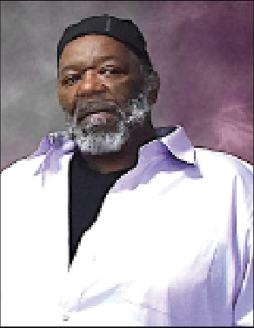Religion Column: Smile, your face says a lot
Published 7:00 am Saturday, September 12, 2020
By Fr. Jonathan Filkins
So many centuries ago, it was written in the Book of Proverbs, “A glad heart makes a cheerful face.” It is just as true today. When we think about some pleasant memory, or somebody excites our funny bone, we cannot help but smile; both within and without. It is almost axiomatic that when we are happy, we smile. This produces compounds within ourselves which produce a sense of well-being and a sunnier perspective of the world around us.
Cera Thompson told a story about her time in a Mississippi church with her two-year-old. She relates the little girl was very quiet during most of the service, but when the sermon began, was far less so. It happened that the minister was her grandfather and was getting quite loud and demonstrative, as he emphasized the finer points of his message. Standing up in the pew, she yelled, “Calm down Pawpaw!” It brought smiles and laughter throughout the congregation.
In our recent decades, we have learned quite a bit about communication; both verbal and non-verbal. Most of us can get a reasonable idea about the kind of person we encounter by reading, or hearing, the words set before us. They may excite us to take action, bring us dread, or engender admiration.
Yet, it is arguable the non-verbal communication is equally, if not more, effective. From history, we discover that words may mean different things, at different times. Our dictionaries are constantly being updated with the latest societal creations. From the website, Culture Trip, consider the word, ‘cute’ originally came from the word “acute,” meant “sharp or quick-witted, and was even written with an apostrophe in place of the missing A. In 1830s America, it took on a new significance and came to mean attractive, pretty or charming – though we still use it in its original manner in phrases like “don’t get cute with me,” referring to someone trying to be clever. Consider the word “ain’t,” among others, is now a part of Websters.
We instinctively know many of these no-verbal communications. When a person has their arms crossed across their chest, they may be angry. Add crossed legs to the scenario and you are likely to have a defensive person. However, the single greatest telltale is the face. It reflects our many emotions and communicates as better than any other. Many a mother has told their child, “I know what you are telling me, but your face says something else.”
Over the many millennia, we have spoken to each other with our faces. Greeting someone with a smile, reflexively engenders a climate of good nature and companionability. When we encounter a person with a scowl, we typically avoid them.
Yet, for the first time in the history of mankind, we are faced with a global scourge of monumental proportions. Even with medical advances since the pandemic of the 1918 flu, we have yet to conquer this insidious and frequently debilitating virus. In our attempts at containment we have lost a most necessary part of how we relate to each other and eventually to ourselves. From the nose down, we find it most necessary to cover our faces with a preventive and most necessary, mask.
Having relied upon this most obvious indicator for so long, we may find ourselves at a loss in our relationships. Gone, at least for now, is the certitude of how others are emotionally feeling; or even physically. Indeed, our smiles are very much of how we are perceived and how others see us.
However, as someone who has lost an eye or a limb, we are inspired to adapt. Each of us has some limitation. Now, we all have a communal limitation. Let us all acknowledge this communal limitation and make our choices. Either we may adapt to our present circumstances, or spend our energies wasted upon the negatives. By thought, word and deed, we may lead others to smile, as well as we ourselves. Such is our God-given ability and answers the call to love others, as we love ourselves.





